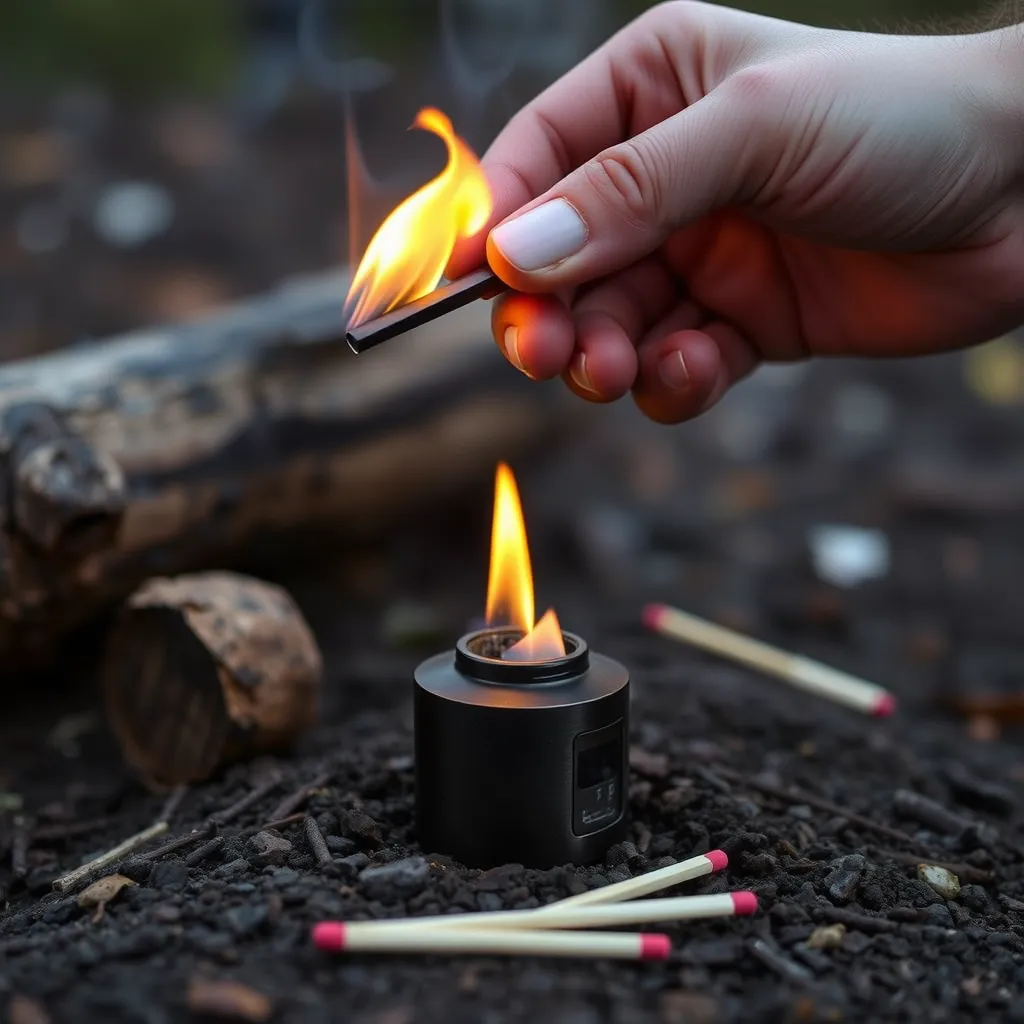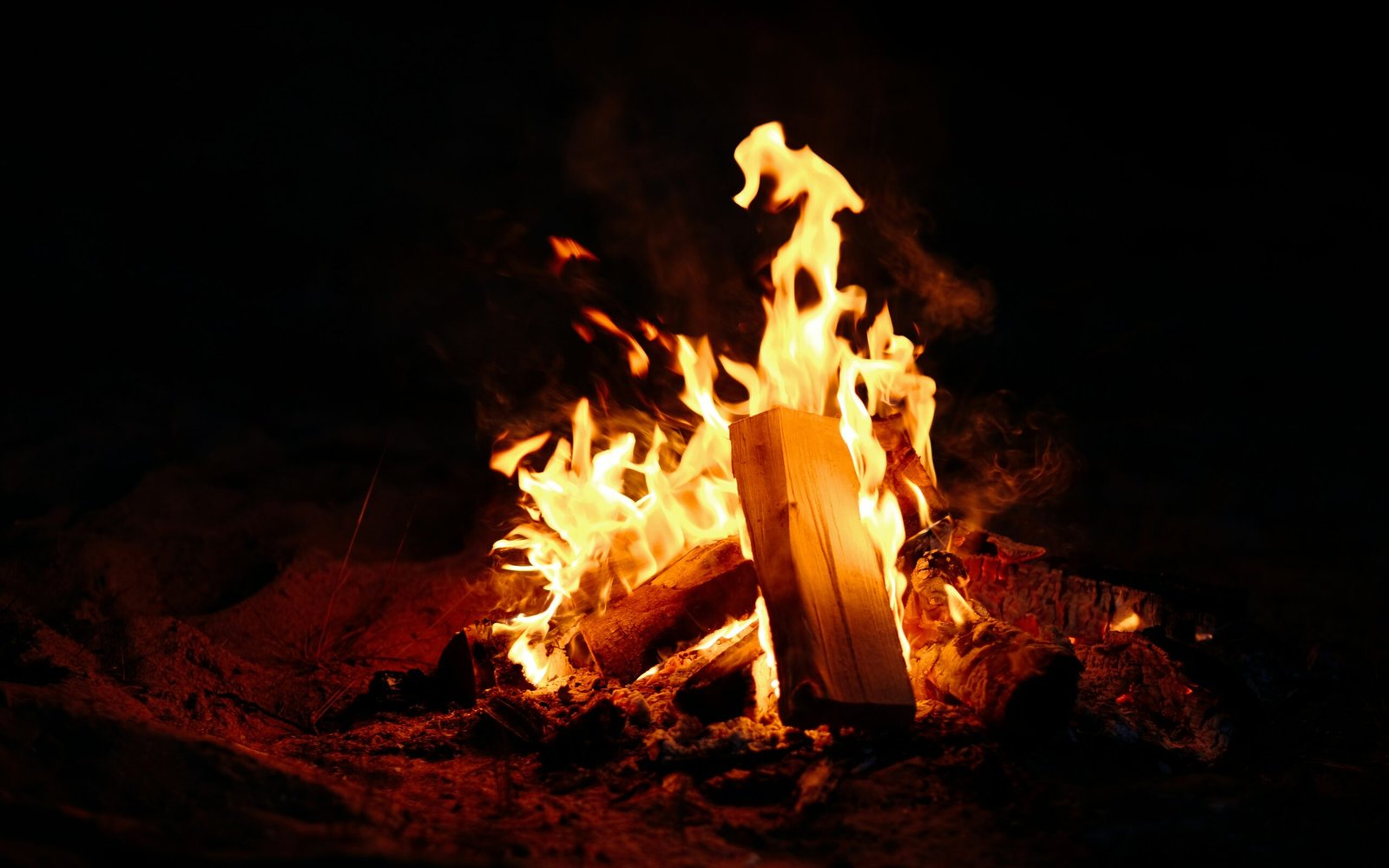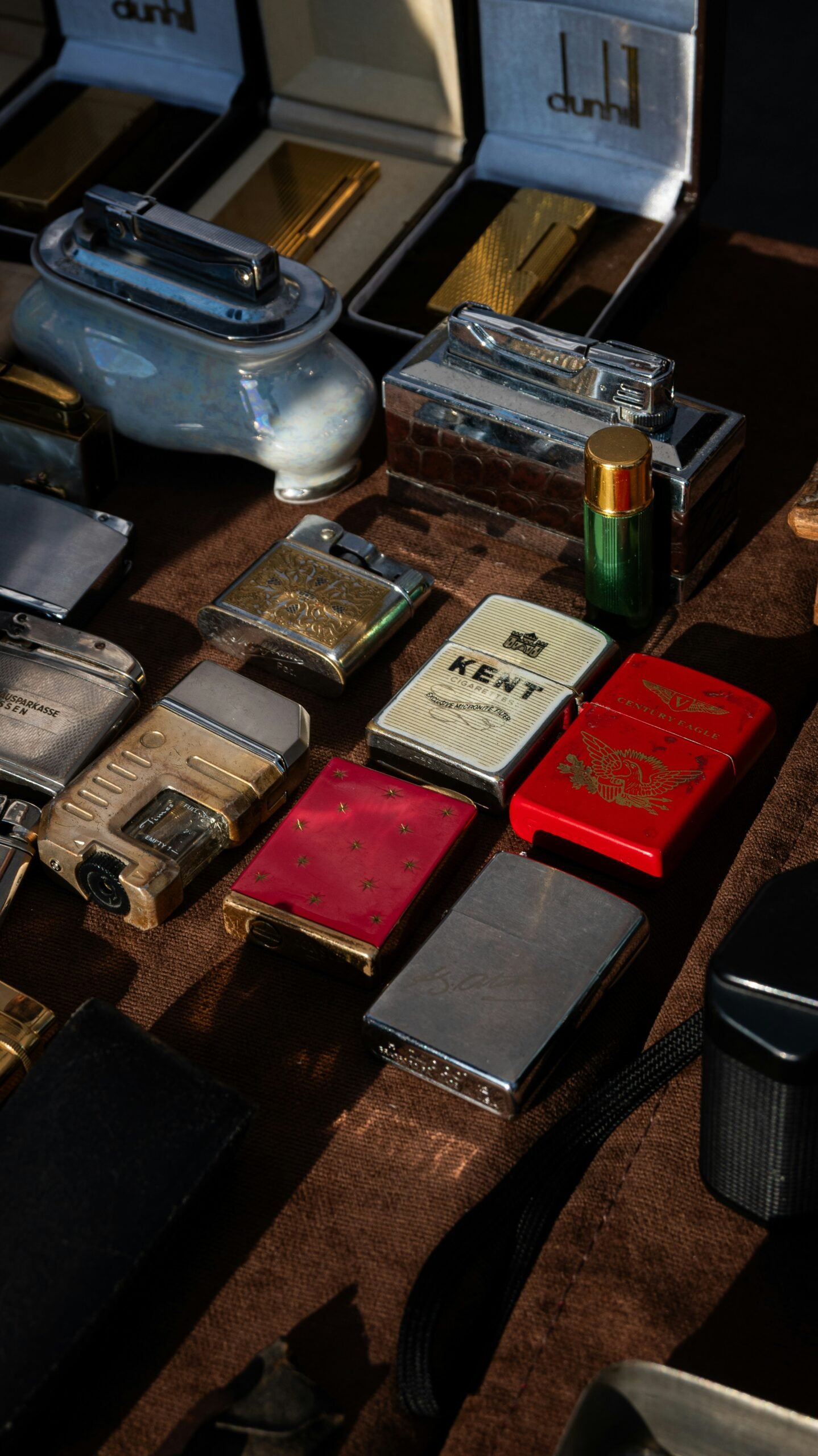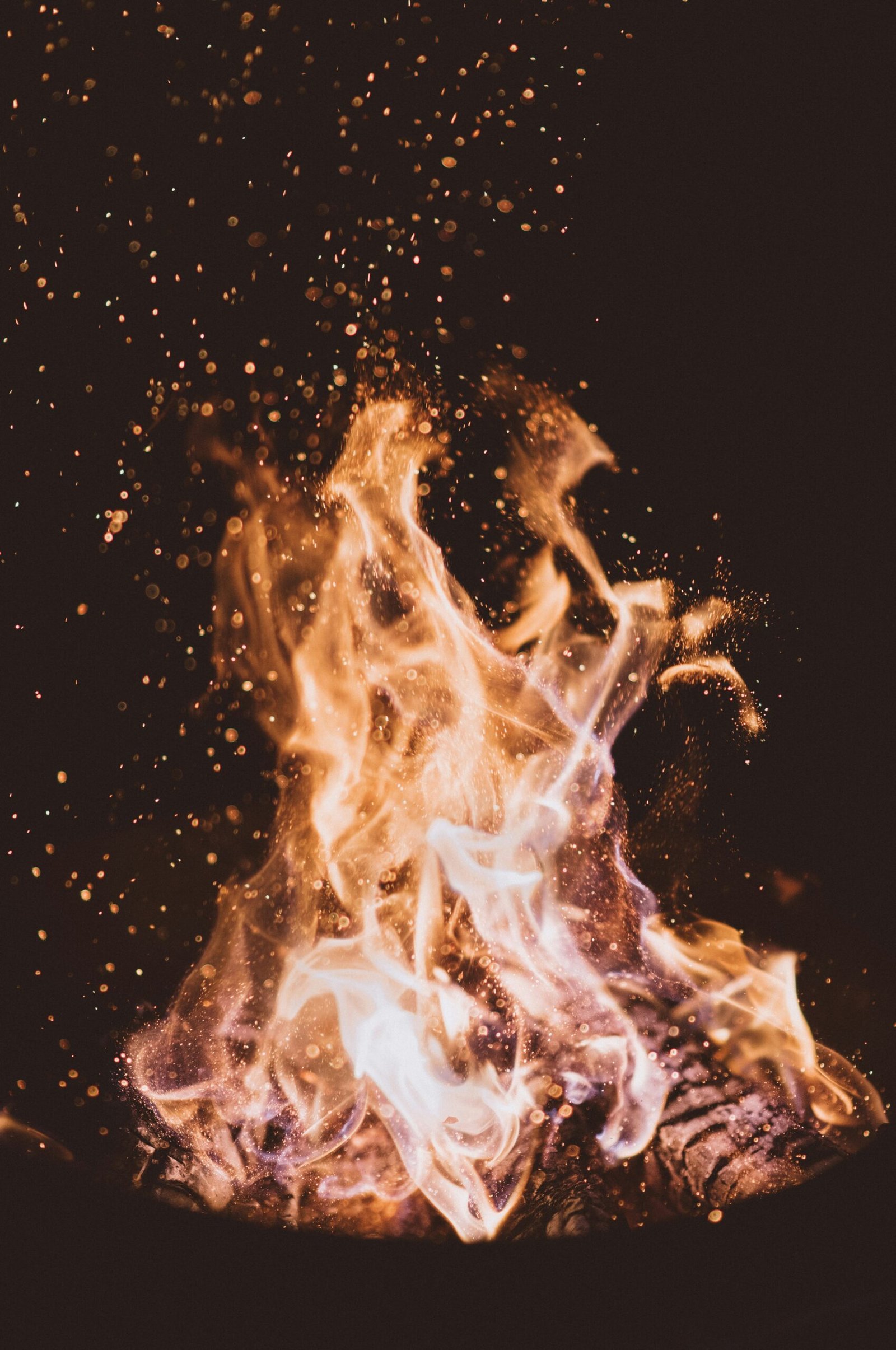
Introduction to Modern Fire-Starting Tools
Fire-starting tools have been essential implements throughout human history, serving a critical role in various scenarios, including camping, survival situations, and day-to-day activities. The ability to create fire not only provides warmth and light but also facilitates cooking, offers protection, and fosters a sense of security. As society evolved, so too did the techniques and tools available for igniting flames, leading to the development of modern fire-starting devices.
Traditional methods of fire-starting, such as the use of friction or flint and steel, have paved the way for more efficient and user-friendly tools. The introduction of modern fire-starting devices, like lighters, matches, and fire starters, has significantly enhanced our ability to generate fire quickly and reliably. These advancements are most evident in emergency and outdoor settings where access to resources may be limited. The modern fire-starting tools often incorporate innovative materials and designs that improve ignitability, durability, and weather resistance.
In contemporary contexts, the significance of fire-making tools extends beyond mere convenience; they are vital in survivalist scenarios where every second counts. The use of such devices ensures that individuals can efficiently initiate a flame, which is particularly important in adverse weather conditions. Consequently, the market features a diverse array of options tailored to various needs, including waterproof lighters, flint-based igniters, and compact fire starter kits.
The evolution of fire-starting tools reflects our ongoing relationship with technology and nature. As we continue to explore and engage with our surroundings, understanding and utilizing modern fire-starting devices can amplify our outdoor experiences, offering not only practicality but also a deeper appreciation for the elemental force of fire. This exploration of modern fire-starting tools will delve into the advantages and disadvantages of these innovative devices, providing insight into their diverse applications.
Types of Modern Fire-Starting Tools
Modern fire-starting tools come in a variety of forms, each designed for specific functions and scenarios. One of the most common tools is the humble match, composed of a stick with a combustible tip that ignites when struck against a rough surface. Matches are portable and easy to use, making them an ideal choice for outdoor activities like camping. However, they can be susceptible to moisture, limiting their reliability in wet conditions.
Lighters are another popular choice. Ranging from disposable plastic models to refillable metal variants, lighters utilize a small flame generated by igniting a pressurized gas. Their convenience lies in their ease of operation and immediate readiness to create fire. Nevertheless, their dependency on fuel means users must ensure they are adequately filled, which can be a drawback during extended trips away from civilization.
Fire starters, often made from waxed cardboard, cotton, or other flammable materials, are designed to ignite easily and maintain a flare long enough for kindling to catch fire. These tools are particularly valuable in backcountry settings where traditional methods may struggle. The advantage of fire starters is their reliability in various conditions, though they can occupy additional space in a pack.
Flint and steel represent a traditional method for creating sparks that ignite tinder. This fire-starting tool relies on friction, and its durability adds to its appeal. Although effective, mastery of this technique is necessary, making it less accessible for novices. Lastly, electric igniters, commonly used in controlled environments such as grills or stoves, employ a spark to ignite gas or fuel. They are straightforward and provide a safe alternative but may not be practical in outdoor contexts without a power source.
Pros of Using Matches
Matches have long been employed as a popular tool for starting fires, and they offer several advantages that contribute to their enduring appeal. One of the primary benefits is their low cost, making them an economical choice for individuals seeking efficient fire-starting solutions. A box of matches can be acquired at minimal expense, allowing users to stock up without straining their budgets.
In addition to affordability, matches are remarkably compact in size. This portability makes them an ideal option for outdoor enthusiasts, campers, and anyone else who requires a reliable fire starter while on the move. Their lightweight design ensures that they can be easily carried in pockets, backpacks, or emergency kits without taking up substantial space or adding significant weight.
Ease of use is another notable advantage of matches. Regardless of skill level, most individuals can quickly and effectively ignite a match, making them accessible to a broad range of users. This simplicity is especially beneficial in situations where time is of the essence, such as when building a survival fire or kindling a campfire.
Matches are also widely available, found in nearly every grocery store, convenience shop, or outdoor supply retailer. This accessibility means that most individuals will not have difficulty procuring matches when the need arises. Furthermore, there are various types of matches, including strike-anywhere and safety matches, that cater to different circumstances. Strike-anywhere matches can be ignited on any rough surface, whereas safety matches require a specific striking strip. Both types are designed to perform reliably under different environmental conditions, ensuring that users can successfully start a fire even in less-than-ideal situations. This flexibility enhances the overall utility of matches as a fire-starting tool.
Cons of Using Matches
While matches serve as a classic tool for fire starting, there are several important limitations to consider when utilizing them. One of the most significant drawbacks is their susceptibility to moisture. Matches can become ineffective when exposed to damp conditions, as water can render the match head non-flammable. This is particularly problematic in outdoor environments or wet climates where the reliability of fire-starting equipment is paramount. As such, individuals may find that matches are not always the best option for igniting fires in adverse weather.
Another concern regarding the use of matches is their physical fragility. Matches can easily break when being struck against a rough surface or during transportation. This fragility can lead to frustration, especially in situations where multiple attempts to strike a match are necessary. The potential for breakage also underscores the importance of carrying extra matches or considering alternative fire-starting tools that offer greater durability in various settings.
Moreover, matches have a limited lifespan if not stored properly. Exposure to air can degrade the match heads over time, leading to a diminished ability to create a flame when needed. This factor necessitates proper storage practices to maintain their effectiveness, which can be a drawback for users who might not be diligent in maintaining their fire-starting supplies.
Lastly, there are safety concerns associated with the handling of matches. For inexperienced users, including children, the risk of accidental ignition or burns can be significant. It is crucial to educate novice users about fire safety and responsible handling when using matches. Overall, while matches are a convenient option for fire starting in certain situations, their limitations necessitate careful consideration, particularly regarding environmental factors, durability, lifespan, and safety precautions.
Pros of Using Lighters
Lighters serve as essential tools for igniting flames quickly and efficiently. Their convenience cannot be overstated; they are designed for ease of use, allowing users to create a flame with a simple flick or press of a button. This user-friendly aspect makes lighters an ideal choice for camping trips, outdoor activities, or even everyday tasks like lighting candles or starting a grill. When compared to traditional fire-starting methods such as matches or flint and steel, lighters provide a significant advantage in terms of accessibility and speed.
Portability is another noteworthy benefit of lighters. Most lighters are compact and lightweight, making them easy to carry in pockets, bags, or camping gear. This portability ensures that individuals can always have a reliable flame source readily available, regardless of their location. Additionally, the various types of lighters available—ranging from disposable models to more durable refillable options—offer users a choice depending on their preferences and intended use. While disposable lighters are often affordable and straightforward, refillable variants can provide a more sustainable option for those who value environmental considerations.
Another advantage of using lighters is their versatility in adverse weather conditions. While matches may struggle in wet or windy environments, many lighters are designed to cope with these challenges effectively. Windproof lighters, for instance, create a strong flame that can withstand gusts of wind, making them suitable for outdoor use during various weather scenarios. Furthermore, certain lighters are equipped with features like waterproof casings, enhancing their reliability in damp situations. In summary, the convenience, portability, and weather-resistant capabilities of lighters solidify their status as one of the most practical tools for starting fires in a variety of circumstances.
Cons of Using Lighters
Lighters, while commonly used for igniting fires, come with a range of disadvantages that can significantly limit their practicality and safety. One major concern is their reliance on fuel, which can run out unexpectedly, leaving users without a means to start a fire when needed. This limitation is particularly problematic in outdoor or survival situations where access to additional fuel may be unavailable. If a lighter is not regularly checked or maintained, it may fail precisely when it is needed most, rendering it an unreliable tool.
Another significant issue with lighters is safety, especially around children or in environments with flammable materials. Lighters can pose a serious hazard if not handled correctly, as they contain flammable liquids and pressurized gas. The risk of accidental ignition or misuse by children is a major concern for parents and caregivers. Such incidents can lead to burns or fires, which can cause serious injuries or damage to property. Additionally, many lighters are designed with attractive colors and styles that can further entice children to play with them, increasing the risk of accidents.
The environmental impact of disposable lighters presents another serious consideration. Many lighters are made from plastic and other non-biodegradable materials, contributing to waste and pollution in landfills. They are often used only once and discarded, exacerbating the problem of single-use plastics in the environment. Furthermore, the manufacturing and disposal processes of these lighters can result in harmful emissions and a larger carbon footprint. When considering all these factors, the drawbacks of using standard lighters become quite evident and warrant careful consideration, particularly in situations where safety and environmental impact are at the forefront of consumer choice.
Pros of Fire Starters and Other Ignition Aids
Fire starters, including waxed cotton balls, magnesium sticks, and other ignition aids, offer numerous advantages when it comes to igniting flames efficiently and effectively. One of the primary benefits of these tools is their ability to ignite with minimal effort. For example, waxed cotton balls are engineered to catch fire easily and sustain a robust flame, serving as an excellent choice for both novice and experienced users alike. This ease of ignition can be crucial, particularly in environments that may pose challenges for starting fires.
Furthermore, many fire starters are designed to burn longer than traditional tinder materials. For instance, magnesium sticks burn for a considerable duration, providing ample time to nurture and build a fire. This feature allows users to focus on constructing a stable fire structure rather than worrying about quick ignition sources that may extinguish prematurely. Moreover, fire starters are often compact and lightweight, making them extremely portable and ideal for camping, hiking, or emergency preparedness kits. Their small size means that they can be easily stored without taking up much space.
Another advantage of various ignition aids is their performance in adverse weather conditions. When attempting to start a fire in damp or rainy environments, traditional tinder may not provide the necessary flame. However, many fire starters are specifically formulated to ignite under challenging conditions, enabling users to successfully start fires when needed most. Additionally, some tools offer reusability, which allows consumers to optimize their resources and reduce waste over time. In summary, fire starters and ignition aids present significant benefits, enhancing the overall fire-starting experience through ease of use, durability, compactness, and adaptability in diverse settings.
Cons of Fire Starters and Other Ignition Aids
While fire starters and other ignition aids offer convenience and efficiency in igniting fires, they are not without their drawbacks. One significant downside is the cost associated with these modern tools compared to traditional methods, such as using matches or flammable materials like kindling. Fire starters, especially those that are high-quality or have specialized functions, can potentially entail a hefty investment over time. For outdoor enthusiasts and campers on a budget, this added expense may deter the use of fire starters in favor of more economical options.
Moreover, fire starters often require specific handling techniques to ensure effectiveness and safety. Improper use can lead to ineffective ignition or, worse, dangerous situations, particularly with more volatile products. Depending on the type of fire starter, users must be trained in the right methods of application, which might not be intuitive for everyone. This necessity for proper training adds another layer of complexity for casual users or inexperienced individuals, diminishing the overall ease that these tools were designed to provide.
Additionally, under certain environmental conditions, fire starters may not perform as expected. Dampness, extreme cold, or high winds can significantly impair their efficiency. Such limitations mean that relying solely on these tools without considering the surrounding conditions may result in frustration, as the fire starter might fail to ignite under unfavorable circumstances.
Finally, environmental concerns regarding synthetic fire starters are a growing issue. Many commercial products contain chemicals that can harm the environment, particularly when used in outdoor settings. Their potential effects on soil and water quality raise questions about the sustainability of using these products. With an increasing focus on eco-friendly practices, users may find themselves reconsidering the environmental impact of their fire-starting choices.
Comparison of Features and Suitability for Different Situations
When selecting a fire-starting tool, it’s essential to analyze the key features of matches, lighters, and fire starters against various situational needs. Each tool offers distinct advantages and drawbacks based on factors like reliability, usability, and weather resistance.
Matches are a traditional option that typically consists of wooden or cardboard sticks coated with a flammable substance. They are lightweight and portable, making them ideal for casual home use or camping. However, their susceptibility to moisture poses a significant limitation; wet conditions can render matches ineffective. They also require careful handling, as striking them improperly can lead to injury.
Lighters have gained popularity due to their ease of use and reliability. A typical lighter uses butane or another flammable gas, providing a consistent flame with just a flick of the thumb. They are suitable for various applications, ranging from survival situations to everyday use. However, certain lighters can be affected by extreme temperatures, which may lead to malfunction in freezing or very hot climates. Moreover, lighters do have a finite lifespan, dependent on fuel availability.
Fire starters encompass a range of products, including magnesium blocks and chemical ignition aids. They are designed for reliability in adverse conditions and generally offer excellent weather resistance. Fire starters can be particularly beneficial in survival situations where starting a fire is critical. While they may require additional preparation, their exceptional performance in challenging environments, including wet or windy conditions, makes them a versatile choice for camping and outdoor activities.
In essence, the right fire-starting tool will depend on the context of its use. Each option has unique strengths and weaknesses, catering to different user preferences and environmental challenges.
Conclusion and Recommendations
In evaluating the various modern fire-starting tools, it is evident that each option presents a unique set of advantages and disadvantages. While traditional matchboxes and lighters are familiar and widely available, they may not provide the reliability required in adverse conditions. On the other hand, more advanced methods like ferro rods and fire starters offer enhanced durability and effectiveness; however, they may require a learning curve for novice users. Ultimately, the choice of fire-starting tool depends heavily on the specific circumstances and the preferences of the user.
For individuals who frequently engage in outdoor activities, such as camping or hiking, a lightweight and compact fire starter, like a ferro rod, would be advantageous due to its longevity and resistance to weather variables. Conversely, casual users or those seeking convenience may prefer traditional lighters or waterproof matches. It is essential to consider the context in which the tool will be used—such as the environment, weather conditions, and availability of fuel sources.
Additionally, adopting best practices for utilizing and maintaining fire-starting tools can significantly enhance their functionality. Users should ensure that lighter fuel is regularly checked, matches are kept dry, and any complex ignition mechanisms are tested before critical use. Proper storage can prevent moisture damage and prolong the life of these tools. Furthermore, safety should always be a priority; making sure to extinguish all fires responsibly and being aware of campfire regulations can mitigate risks associated with fire use.
In summary, the selection of a fire-starting tool must align with individual needs and scenarios while adhering to safety measures. By taking the time to assess the options available, users can choose the most appropriate tool for their fire-starting needs, ensuring efficacy and safety in their outdoor endeavors.


